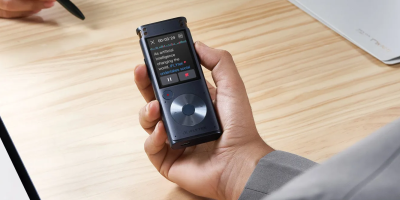
Ruthlessly ripping a page right out of NVIDIA’s book, Texas Instruments has come out and announced their OMAP 5 platform – they haven’t even released OMAP 4 yet. But the cards they’re showing for the future look very promising. Let’s jump into this press release, shall we?
TI’s OMAP 5 processors will include not one, but two ARM Cortex-A15 cores. Not amazing sounding, right? But after you hear that each core is capable of running at up to 2GHz, you probably won’t be able to continue reading this post. And for a bit of icing on that cake, the Cortex-A15 is considered ARM’s fastest architecture to date, and that’s no small accomplishment.
Cortex-A15 is 50 times faster than Cortex-A9 and has 8GB of dynamic memory – your phone will almost literally be a pocketable laptop as most smartphones are now. They do all of this using less battery life as they leave less intensive tasks up to two more processors sitting on the chipset: 2x Cortex-M4. You’ll be able to multitask without fear of slowdown.
All of the other functionality you’d expect from a modern mobile chipset is there, and then some. The chipset is expected to make its way to OEMs starting in the beginning of this year. Go ahead and take a look for yourself with the press release ahead.
Not just a faster horse: TI’s OMAP™ 5 platform transforms the concept of ‘mobile’
– New OMAP 5 platform creates disruptive mobile experiences akin to Henry Ford’s transformative automobile advancements
– Mobile computing, stereoscopic 3D, gesture recognition and computational photography intensified by TI’s best-in-class applications platform
– Sophisticated multi-core processing, including ARM® Cortex™-A15 MPCore™ processors
DALLAS (Feb. 7, 2011) – Texas Instruments Incorporated (TI) (NYSE: TXN) announced today the next generation of its popular OMAP™ family: the OMAP 5 mobile applications platform, which is positioned to transform how mobile devices, such as Smartphones, tablets and other mobile form factors are used, making them even more valuable in our daily lives. More information on the OMAP 5 platform can be found here: www.ti.com/wbu_omap5_pr_lp.
Imagine carrying only one productivity tool while in the office, on the road or at home – a single mobile device which provides PC-like computing performance with mobile power levels. Imagine using the same device to conduct a stereoscopic 3D (S3D) video conference for work. Imagine being in a meeting and projecting a document from this device, which you can edit by simply touching the projected image on a surface. Imagine going home and switching the device to your personal operating system to drive a next-generation game on your HDTV using wireless display technology. These capabilities are only highlights of what the TI OMAP 5 platform uniquely delivers. To see more experiences enabled by the OMAP 5 platform, view a video here: www.ti.com/wbu_omap5_pr_v.
Highest performance, lowest power…yet again
The 28 nanometer OMAP 5 applications processors carry on the OMAP family tradition of delivering significant increases in performance and functionality, while lowering power consumption compared to their predecessors. Specifically, they offer up to 3x processing performance and five-fold 3D graphics improvement, yet provide a nearly 60 percent average power reduction compared to a sample user experience on the OMAP 4 platform. Additionally, the OMAP 5 platform’s software is designed for maximum reuse to ease migration from the OMAP 4 platform.“The next decade will bring a revolution in mobile computing, as devices continue to converge, attempting to become one single device that meets all of our computing, entertainment, and complex day-to-day needs and interests. However, the bridge to true mobile computing enablement was missing until today. The OMAP 5 platform will be at the heart of driving the mobile computing revolution by delivering the highest computing, graphics and multimedia performance possible within the low power budget required by mobile form factors,” said Remi El-Ouazzane, vice president, OMAP platform business unit, TI.
Sophisticated, multi-core processing: harmonized for the best possible user experience
The OMAP 5 processor leverages two ARM® Cortex™-A15 MPCores™ – the most advanced ARM architecture to date – capable of speeds of up to 2 GHz per core in the OMAP 5 implementation. With a 50 percent boost in performance over the Cortex-A9 core (at the same clock frequency), combined with up to 8GB of dynamic memory access and hardware virtualization support, the Cortex-A15 core can enable true mobile computing experiences, such as the ones referenced above.The OMAP 5 architecture utilizes an intelligent combination of many different processing cores – each tailored and power-optimized for specific functions – and all harmonized to provide the best possible user experience. In addition to the two Cortex-A15 cores, the OMAP 5 processor includes individual, dedicated engines for: video, imaging and vision, DSP, 3D graphics, 2D graphics, display and security. The processor also includes two ARM Cortex-M4 processors for offloading real-time processing from the Cortex-A15 cores to improve low-level control and responsiveness of mobile devices.
“We continue to see high performance mobile devices, such as advanced Smartphones and tablets, requiring increased processor performance while remaining within the restricted mobile power consumption boundaries,” said Mike Inglis, EVP and general manager of the ARM Processor Division. “The OMAP 5 processor highlights the advantage of the ARM business model. The relationship enables product differentiation through the integration of low power multi-core ARM processor cores with the partners’ own system-on-chip technologies, including power management, audio and video processing. ARM is proud to have contributed to the OMAP 5 platform, which enables OEM customers to leverage the extensive ARM software ecosystem to quickly deliver innovative new mobile solutions.”
Next-generation natural user interfaces
Natural user interfaces (NUI) – how we interact with the world around us in an intuitive, natural way – are taken to the next level with the OMAP 5 platform’s advanced support for S3D, gesturing (including proximity sensing), and interactive projection.The OMAP 5 processor can support up to four cameras in parallel, as well as record and play back S3D video in 1080p quality, and perform real-time conversion of 2D content to S3D at 1080p resolution. The new processor can also deliver advanced short- and long-range gesturing applications, as well as full-body and multi-body interactive gestures, utilizing either 2D or S3D cameras. The OMAP 5 processor, coupled with a TI DLP® Pico™ projector and a camera, can also enable interactive projection where the user can actually “touch and drag” projected images on both a table top or wall.
Additionally, the OMAP 5 processor can interface with and leverage a wide variety of sensor technologies to enable touchless sensing, such as proximity sensing, capacitive sensing and ultrasonic sensing.
Computational photography – the industry’s next frontier
Today, most mobile devices are equipped with built-in cameras; however, due to the physical limitations of the device, picture and video quality is not on par with stand-alone consumer electronic products, such as digital SLR cameras. In order to close this quality gap, computational algorithms are used to compensate for these limitations. The OMAP 5 processor includes hardware and software resources that enable the development and deployment of such algorithms, such as camera stabilization, motion blur reduction, noise reduction, high dynamic range and face-based processing. The new processor also goes a step further by using the same OMAP 5 hardware resources with vision algorithms to extract features and data from the picture, in order to implement applications such as face recognition, object recognition and text recognition. These vision capabilities can also be used as the foundation for many different and exciting augmented reality applications.Industry’s best all-around applications processor platform
The OMAP 5 platform sports an impressive list of features and benefits supporting everything from open source platforms to complementary TI technologies, including:Strengthening the OMAP 5 platform’s value, TI leverages its open source community involvement to benefit customer product development. Early extensive work in community projects translates to a significant quality and schedule advantage for device manufacturers, including power, memory and performance optimization. Additionally, TI’s pre-integrated software packages for popular Linux-based distributions help manufacturers achieve maximum system-level performance while driving a faster time-to-market.
Availability
TI’s OMAP 5 platform is expected to sample in the second half of 2011, with devices on the market in the second half of 2012. The OMAP5430 processor is offered in a 14x14mm Package-on-Package (PoP) with LPDDR2 memory support. The OMAP5432 processor is offered in a 17x17mm BGA package with DDR3/DDR3L memory support.These products are intended for high-volume mobile OEMs and ODMs and are not available through distributors. TI also plans to develop compatible ARM Cortex-A15 processor-based solutions for broader market applications across TI’s product portfolio.










I really like what this processor has to offer. More then likely they will cut out a lot of the parts for consumer phones, but I see this hardware in use in the business sector. The way I see it is a business tablet that can do video conferencing on the fly as well as using a dock system to run a presentation/conference. Imagine docking this thing in a podium, your own display with notes, the projector display and using the front facing camera and the rear facing(or even some sort of attachable camera system) to run it all. Plus encrypted by the hardware. Thats what I see when I read this.
david i completely agree now throw honeycomb on that b1**h and you got 2 customers :P
Amazing, isn’t it? In one year… This type and speed of processor will probably be the industry standard. I’m amazed at what the new speeds and capabilitys of Android phones will be in the future.
“50 times faster” != “50 percent boost in performance”
With Tegra4, OMAP5, Apple’s A6, Orion2, Quad core Snapdragons coming out in 2012, it wont matter either chip you have, because you will have incredible performance either way
A 50 percent boost is 1.5 times faster, not 50 times faster.
What does “dynamic memory” mean? Does someone have a description/explanation of what that means? Also, at 2GHz it’s expected to be only 50% faster then the 1GHz chips already in the market?… which means just clock improvement… not improvement in IPC and no efficience improvement.. now, it was that better but at the same power consumption.. then we would have something.
That’s it…a new phone every year!
QuantomRand is right, the press release states the CortexA15 is 50% faster, not 50 times faster.
@lost
Your tag describes you pretty accurately. Its a different architecture. Most of us have A8s, tegra 2 is A9 which is 25% faster (I believe but could be wrong) than the A8 At The Same clock speed. The OMAP 5 is based on A15 architecture, which is theoretically 50% faster at the same clock speed. Meaning an a 1ghz OMAP 5 will be able to perform 1.5 as many calculations as the current 1ghz tegra 2.
Why dont you inform your self better before making such emphatic statements…
@lost
“With a 50 percent boost in performance over the Cortex-A9 core (at the same clock frequency)”
The OMAP 4 is out, its just not an any Android phones. The RIM Playbook may get one, dont know if any Android phones will yet.
Anyone read the part about the TI PICO DLP? friggen touchscreen projector!!! goddamn augmented reality apps would soar!